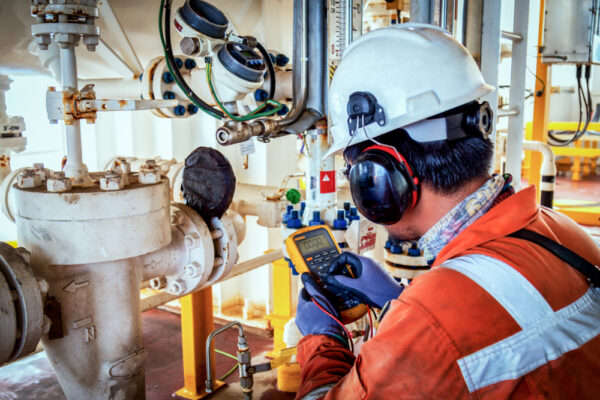Little Known Questions About Roar Solutions.
Table of ContentsRoar Solutions for BeginnersRoar Solutions for BeginnersHow Roar Solutions can Save You Time, Stress, and Money.
In such an environment a fire or surge is possible when three fundamental conditions are met. This is typically referred to as the "hazardous area" or "burning" triangle. In order to secure setups from a prospective surge an approach of evaluating and categorizing a potentially hazardous location is needed. The objective of this is to make sure the appropriate choice and installation of tools to inevitably stop an explosion and to ensure safety and security of life.

No equipment must be set up where the surface area temperature level of the tools is more than the ignition temperature level of the given hazard. Below are some common dirt hazardous and their minimum ignition temperature. Coal Dirt 380C 225C Polythene 420C (melts) Methyl Cellulose 420C 320C Starch 460C 435C Flour 490C 340C Sugar 490C 460C Grain Dust 510C 300C Phenolic Resin 530C > 450C Aluminium 590C > 450C PVC 700C > 450C Residue 810C 570C The chance of the hazard existing in a focus high sufficient to cause an ignition will certainly vary from area to area.
Hazardous area electric tools maybe developed for use in higher ambient temperature levels. Field Repair By Authorised Employee: Complicated testing might not be called for however particular treatments may need to be complied with in order for the devices to preserve its third event ranking. Each piece of equipment with a dangerous rating should be examined separately.
The Single Strategy To Use For Roar Solutions
The tools register is a detailed database of tools records that consists of a minimum set of areas to identify each thing's location, technological specifications, Ex classification, age, and ecological data. This info is vital for tracking and handling the equipment properly within dangerous locations. In comparison, for regular or RBI tasting evaluations, the quality will be a mix of Detailed and Close examinations. The proportion of Thorough to Close examinations will be established by the Equipment Danger, which is evaluated based upon ignition threat (the probability of a resource of ignition versus the probability of a flammable atmosphere )and the dangerous location classification
( Area 0, 1, or 2). This variation will likewise influence the resourcing demands for job preparation. As soon as Lots are defined, you can establish sampling plans based on the sample dimension of each Whole lot, which describes the number of random devices things to be examined. To figure out the called for example size, two elements need to be examined: the dimension of the Whole lot and the group of evaluation, which suggests the level of initiative that need to be used( lowered, normal, or enhanced )to the evaluation of the Great deal. By integrating the classification of assessment with the Whole lot dimension, you can after that develop the ideal rejection criteria for an example, indicating the allowed variety of malfunctioning things located within that example. For more information on this procedure, please describe the Energy Institute Standards. The IEC 60079 standard advises that the optimum period in between assessments must not go beyond three years. EEHA evaluations will also be conducted beyond RBI campaigns as component of scheduled upkeep and devices overhauls or repair services. These evaluations can be credited toward the RBI example sizes within the influenced Whole lots. EEHA assessments are carried out to recognize mistakes in electrical tools. A weighted racking up system is important, as a solitary tool might have several faults, each with differing levels of ignition threat. If the mixed score of both examinations is less than two times the fault rating, the Great deal is considered acceptable. If the Whole lot is still thought about undesirable, it needs to undergo a complete assessment or justification, which might cause stricter examination procedures. Accepted Whole lot: The sources of any kind of faults are determined. If a typical failure mode is found, added equipment may call for maintenance. Faults are classified by extent( Security, Honesty, House cleaning ), guaranteeing that immediate concerns are examined and addressed immediately to minimize any influence on safety or operations. The EEHA data source should track and tape-record the lifecycle of mistakes along with the rehabilitative activities taken. Carrying out a robust Risk-Based Inspection( RBI )technique is important for ensuring compliance and safety in handling Electric Tools in Hazardous Locations( EEHA) (high voltage courses). Automated Fault Scoring and Lifecycle Management: Easily handle mistakes and track their lifecycle to improve assessment accuracy. The introduction of this assistance for risk-based inspection even more enhances Inspectivity's position as a best-in-class service for regulative compliance, in addition to for any kind of asset-centric examination usage situation. If you want learning extra, we welcome you to ask for a presentation and discover exactly how our option can transform your EEHA management procedures.
Not known Facts About Roar Solutions

In regards to explosive risk, a dangerous location is a setting in which an eruptive environment is present (or might be anticipated to be present) in amounts that require special precautions for the building and construction, installation and use equipment. hazardous area electrical course. In this post we explore the challenges dealt with in the office, the risk control actions, and the required expertises to function safely
It is an effect of contemporary life that we make, keep or handle a series of gases or liquids that are considered flammable, and an array of dirts that are considered combustible. These materials can, in specific problems, form eruptive ambiences and these can have major and tragic repercussions. A lot of us are familiar with the fire see triangular get rid of any among the three aspects and the fire can not take place, yet what does this mean in the context of hazardous areas? When damaging this down right into its easiest terms it is basically: a mix of a certain quantity of launch or leakage of a particular substance or material, blending with ambient oxygen, and the existence of a source of ignition.
In the majority of circumstances, we can do little concerning the degrees of oxygen airborne, yet we can have substantial influence on resources of ignition, for example electric equipment. Dangerous areas are recorded on the hazardous area classification drawing and are determined on-site by the triangular "EX-SPOUSE" indicator. Below, among various other key information, areas are split right into 3 kinds depending upon the danger, the chance and period that an eruptive environment will exist; Zone 0 or 20 is considered the most harmful and Zone 2 or 22 is considered the least.
Comments on “7 Easy Facts About Roar Solutions Described”